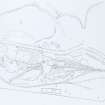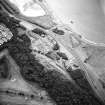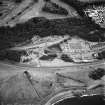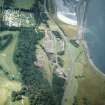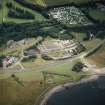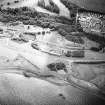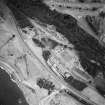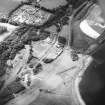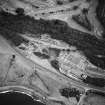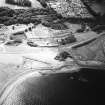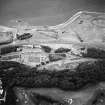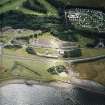Prestongrange Brickworks
Brick And Tile Works (Post Medieval)
Site Name Prestongrange Brickworks
Classification Brick And Tile Works (Post Medieval)
Alternative Name(s) Prestongrange Tileworks; Morrison's Haven
Canmore ID 53727
Site Number NT37SE 79
NGR NT 3718 7361
NGR Description Centred NT 3718 7361
Datum OSGB36 - NGR
Permalink http://canmore.org.uk/site/53727
- Council East Lothian
- Parish Prestonpans
- Former Region Lothian
- Former District East Lothian
- Former County East Lothian
NT37SE 79 centred 3718 7361
See also NT37SE 78, Prestongrange Colliery. Kilns nos. 8 and 9 listed.
For adjacent and associated harbour of Morrison's Haven, see NT37SE 12.
Variously described as a brick-, fireclay- and pipe-works, this installation has been incorporated into a museum along with the adjoining colliery (NT37SE 78).
Information from RCAHMS (RJCM), 6 July 1984.
(Location cited as NT 373 737). Prestongrange Brick, Tile and Fireclay Works. In use c. 1760 and 1890's to 1970's; visited 1978. Out of use; part demolished and part incorporated into museum. One Hoffmann-type (continuous) kiln with 24 chambers; eleven round downdraught kilns.
G Douglas and M Oglethorpe 1993.
The remains of Prestongrange Brick, Tile and Fireclay works and associated buildings are visible on a vertical air photograph (OS 85/015/28, flown 1985).
Information form RCAHMS.
This site has only been partially upgraded for SCRAN. For further information, please consult the Architecture Catalogues for East Lothian District..
February 1998
Publication Account (1985)
The first shaft of what was to become the last mine at Prestongrange was sunk in 1830; the great beam engine built by Harvey and Company of Hoyle, in Cornwall, was shipped north and erected in 1874 to pump water out of the mine. The water was raised in three stages, with one pump at the Great Seam level (approximately 128 m), one half-way to the surface, and one at the Beggar Seam (approximately 238 m). On average some 2955 litres a minute reached the surface.
The massive cylinder is housed in a tall, narrow, rubble-built engine house. High up, more than 10 m of cast-iron beam protrudes, to which is attached the 102 tonne pump-rod of Oregon pine. The beam pivots on the front wall of the engine-house, which is understandably reinforced! The generating station and the much later pithead baths are the only other surviving original pit buildings on site.
Nearby, however, stand a 24-chamber 'continuous' Hoffmann kiln and its chimney - all that remains of the Brick and Fireclay Works. It was common for industries that depended on coal for power to cluster near to the colliery. Brickworks, potteries, chemical works, breweries, saltworks and a flint-mill were all once sited hereabouts, whilst the right to construct a harbour at Prestongrange (the old Acheson's, later Morison's Haven) was granted as early as 1526 to the coal-working monks of New battle. A few traces remain. The monks were also involved in salt-working and Prestonpans, so called from the 18th century, was originally Aldhammer but renamed Salt Prieston in the 13th century.
A 'coal trail' now links Prestongrange and Newtongrange (no. 1) - by way of Preston pans (17th century lairds' houses and mercat cross); Meadowmill (site of Battle of Prestonpans 1745, and Scotland's first railway 1722); Tranent (coal town from late 15th century; 18th century parish church with fine gravestones); Birsley Brae (hummocky pits of a medieval coal heugh); Fa'side (restored tower-house; fine view over Lothian Coalfield); Dalkeith (old market town and ruinous pre-Reformation Collegiate Church
ofSt Nicholas); Newbattle (18th century mansion of the Marquis of Lothian; remains of 13th century Cistercian Abbey; Maiden Bridge).
Information from 'Exploring Scotland’s Heritage, Lothian and Borders, (1985).
































